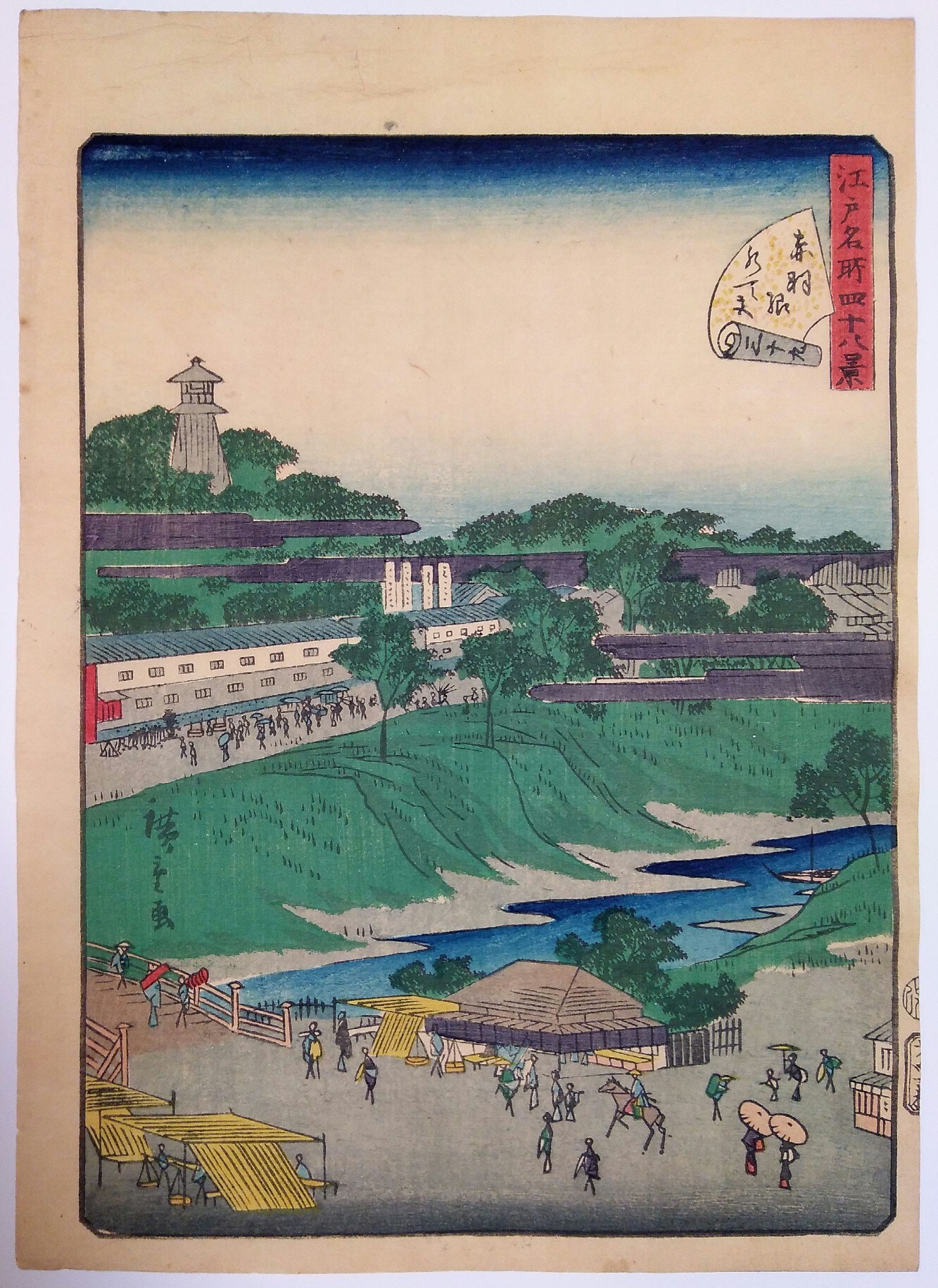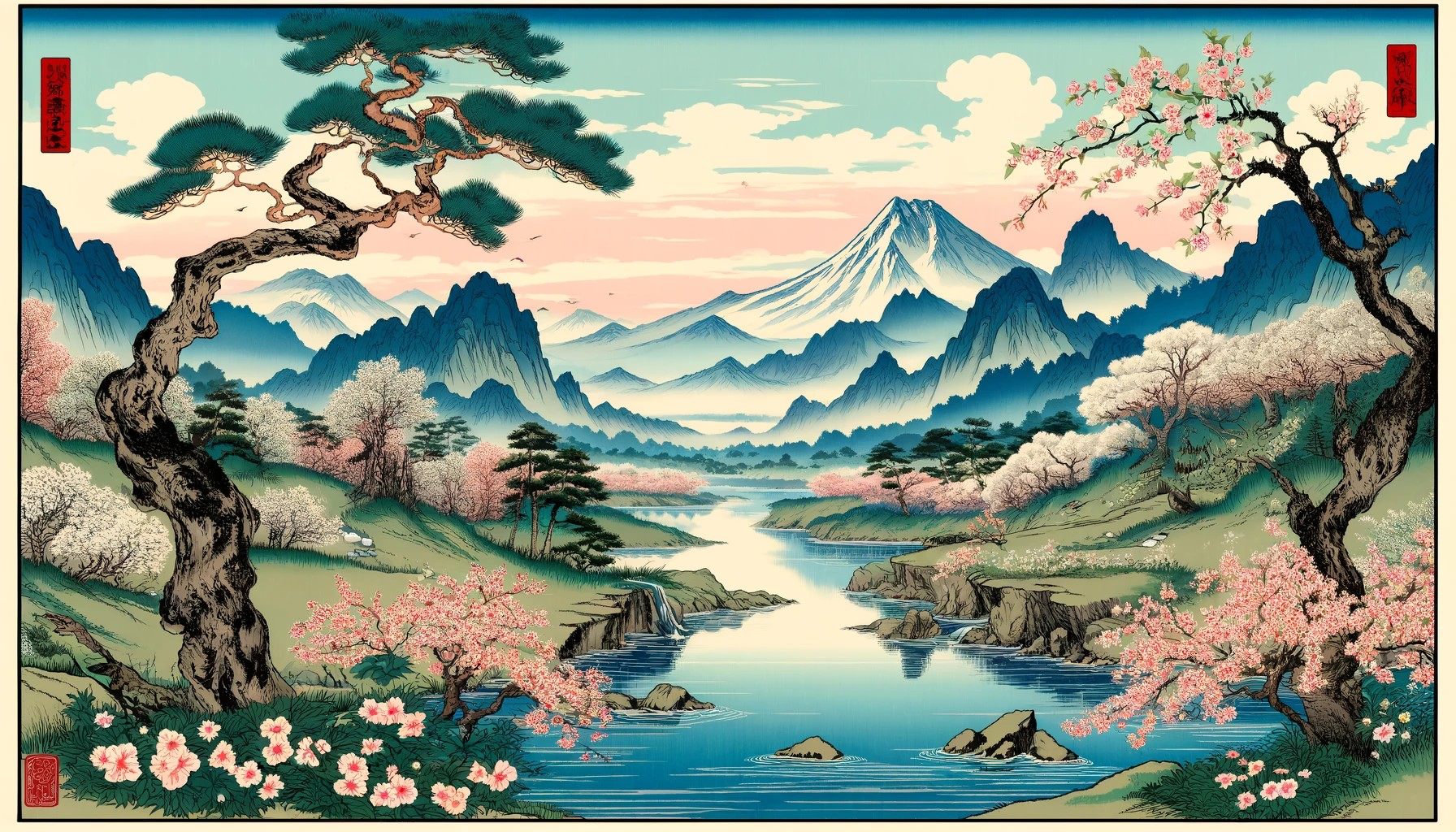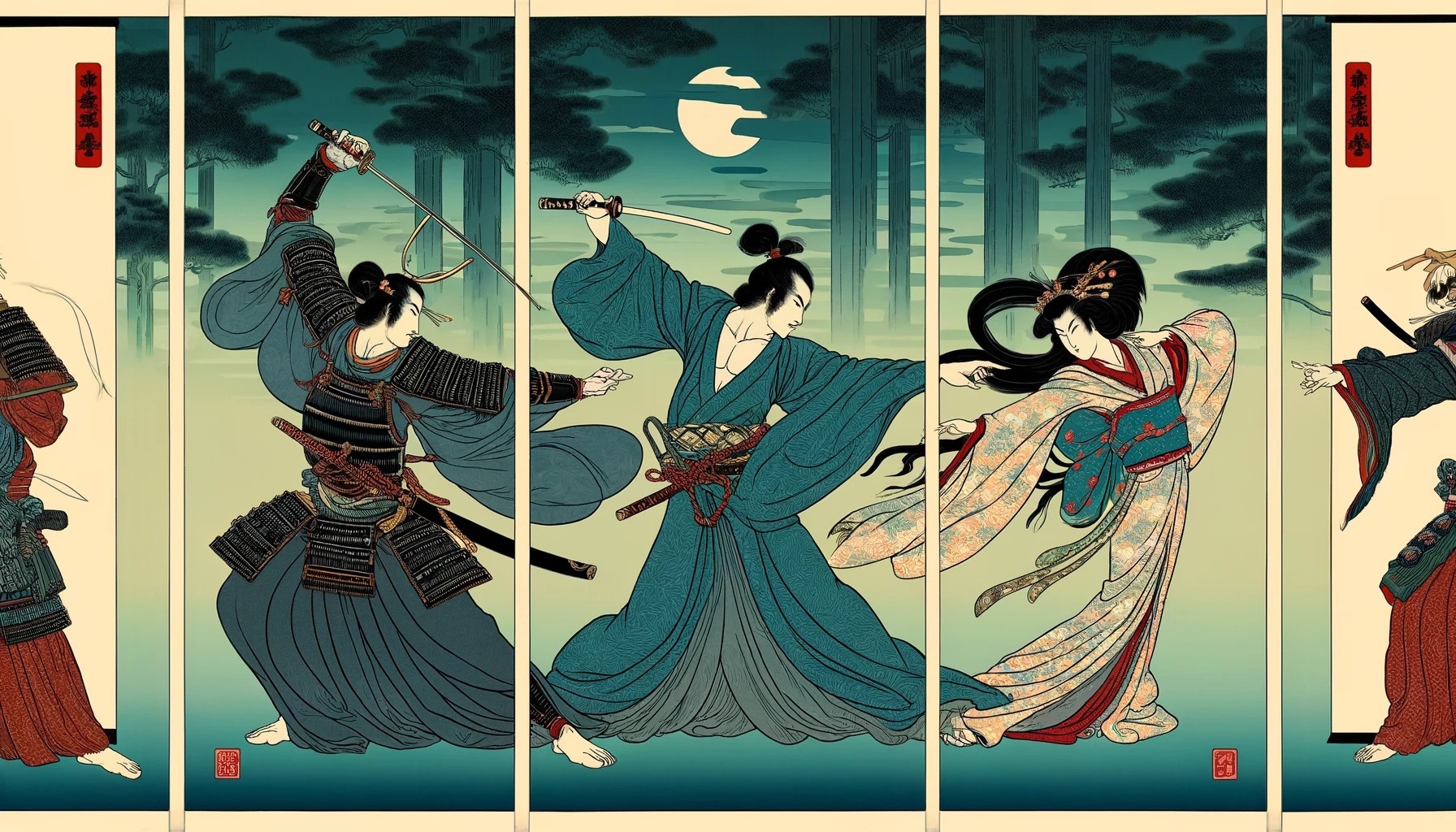
Author: Utagawa Hiroshige II (二代目広重)
Subject: Suiten Shrine at Akabane (Akabane Suitengū, 赤羽根水天宮).
Series: Forty eight famous views of Edo (Edo meisho yonjū hakkei, 江戸名所四十八景).
Number: 39/48.
Genre: meisho-e (名所絵), fūkei-ga (風景画).
Size: medium (chūban, 中判) 25,7cm x 18,2cm (10,11 x 7,16 inches).
Publisher: Tsutaya Kichizō (蔦屋吉蔵) here signed as Tsutakichihan (蔦吉版).
Period: c. 1861.
Trimmed: yes
Backed: no
Code: UGHII01012
Condition: good condition. Vivid and clear colors. No presence of folds, repair marks nor holes.
Minor stains and wrinkles. It has not been backed.
Akabane is a small neighborhood situated between the Akabane Bridge (Akabane Bashi, 赤羽橋) and the
Nakano Bridge (Nakano Bashi, 中之橋) in Mita (三田), a district within the Minato Ward (Minato-ku, 港区),
located in the southern part of Edo.
The name "Akabane" is believed to originate from the red soil (Akahani, 赤埴) that is characteristic of this area.
This residential complex is notable for housing the largest fire watchtower in Edo and the Suitengū Shrine (水天宮).
The Arima family, which has been the head of the Kurume feud (Kurume Han, 久留米藩) in Kyūshū since the 17th century,
is closely associated with these landmarks.
The Suitengū Shrine venerates the Suijin (水神), the water deity of the Chikugo River (Chikugo Kawa, 筑後川). People used
to offer prayers at this shrine to seek assistance in locating lost items and for safe childbirth. General worship ceremonies
were typically held on the fifth day of each month.
In 1871, the complex was relocated to Aoyama (青山), and in 1872, it was moved again to Nihonbashi (日本橋), following the relocation
of the Arima residence.


